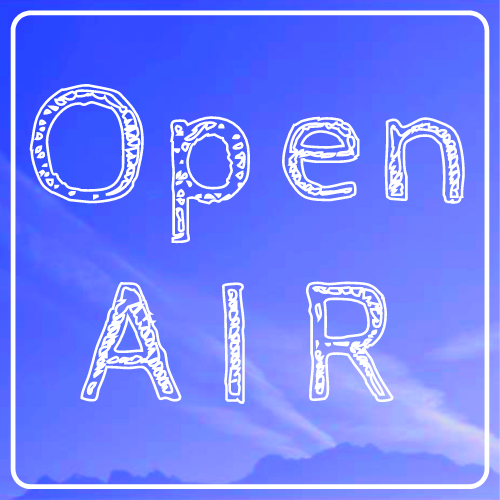Rachel Frank: RESTORE
2021 Artist-in-Residence at Rattlesnake Creek Dam
How was your experience as an Open AIR Artist-in-Residence?
I had a really nice experience as an Open AIR Artist-in-Residence. Coming from NYC, it was amazing to be able to walk a short distance outside my door and get on a trail up a mountain in the morning. I was an artist-in-residence at the Rattlesnake Creek Dam site, so I spent a lot of time at the site, filming, sitting, and observing the landscape, bird watching, and documenting the changing landscape as the plants and animals returned. I also took advantage of some of the other partner spaces and spent time at the University of Montana Zoology Museum sketching and photographing bird specimens and explored the 3-D scanning and printing facilities at the Missoula Public Library.
What was your research process during this time?
A large portion of my work for many years has explored the environmental practice of rewilding or the returning of species that have been locally extirpated and restoration of landscapes. I was really interested in viewing and researching the Rattlesnake dam removal as a rewilding project. The removal of the dam meant the river could flow freely again, allowing fish, like the mountain whitefish and brown trout to spawn, plants to regrow, and the nutrients of the river to pass from one area to another. I was scheduled to participate in the residency during the actual demolition of the dam in 2020, but because of the pandemic, postponed my residency for a year. In retrospect, it was a blessing — rewilding projects are often a multi-year process of restoration, and coming during the summer of 2021, I had the opportunity to see plants growing on the former dam site, saw the first amphibian spotted at the site—a western toad, and really got to spend a lot of quiet alone time on the creek watching birds, filming, and listening to the water. Before the residency, I researched what effects dam removals can have on an ecosystem and during the residency I spent my time working on a performative video where the creek was rewilded through a series of actions with ceramic offering vessels. The video Rewilding the Rattlesnake Creek Dam Site can be found on my website. I also invited the public to participate in a rewilding offering performance at the site. It was my first time staging one of these on-site participatory performances. People really seemed to connect to the water in an intimate way with this project, so it’s made me interested in staging other participatory performances in the future.
How would you describe your work?
I work in sculpture, video, and performance –often combining these disciplines- to explore environmental concerns and our shifting relationship with natural history, climate change, and non-human species. Using fabric, ceramics, and other materials, I make large-scale masks or other sculpture objects, which exist both as stand-alone works and as materials engaged in broader narratives. I use these works to interact with site-specific landscapes either with Rewilding performances that seek to engage with the landscapes’ memory and restore past ecosystems, or through sculptures and videos concerned with natural history, extinction, and climate change.
What keeps you returning to this subject, body of work?
The behind-the-scenes work I do for my projects is pretty research-based. I spend a fair amount of time reading books and scientific articles and even sometimes reach out to biologists, wildlife managers, and other experts in the field. I return to subjects because I am really interested in learning more and enjoy the exploration of ideas both through the research, and the discovery that happens when working on a project in the studio. I also really enjoy projects that take me to other areas of the country. I didn’t grow up in NYC and I love to camp and hike and be outdoors, so projects that involve really spending intimate time in a landscape or outdoor environment are important to me. When I am in NYC, I tend to focus on sculptural work (either working in ceramics or large-scale fabric works), reading and researching, and then outside the city, I spend more time filming and writing. The variety of disciplines and locations that I treat as “studio” or “subject” really keeps me excited and interested.
See more of Rachel’s work at www.rachelfrank.com





